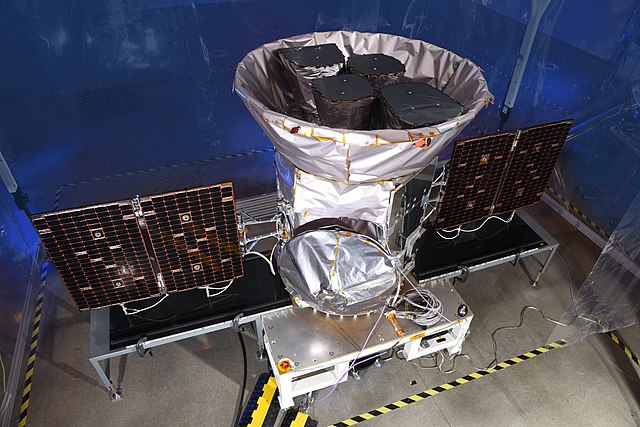A tidal disruption event (TDE) is a transient astronomical source produced when a star passes so close to a supermassive black hole (SMBH) that it is pulled apart by the black hole's tidal force. The star undergoes spaghettification, producing a tidal stream of material that loops around the black hole. Some portion of the stellar material is captured into orbit, forming an accretion disk around the black hole, which emits electromagnetic radiation. In a small fraction of TDEs, a relativistic jet is also produced. As the material in the disk is gradually consumed by the black hole, the TDE fades over several months or years.
Simulation of a star being disrupted by a supermassive black hole during a tidal disruption event.
Hubble Space Telescope optical image of the TDE Swift J1644+57
Transiting Exoplanet Survey Satellite
Transiting Exoplanet Survey Satellite (TESS) is a space telescope for NASA's Explorer program, designed to search for exoplanets using the transit method in an area 400 times larger than that covered by the Kepler mission. It was launched on 18 April 2018, atop a Falcon 9 launch vehicle and was placed into a highly elliptical 13.70-day orbit around the Earth. The first light image from TESS was taken on 7 August 2018, and released publicly on 17 September 2018.
TESS satellite
TESS – first light (7 August 2018)
The 26 observation sectors of the sky planned for TESS
Falcon 9 launch vehicle carrying TESS, launching from Space Launch Complex 40 at Cape Canaveral in April 2018.






